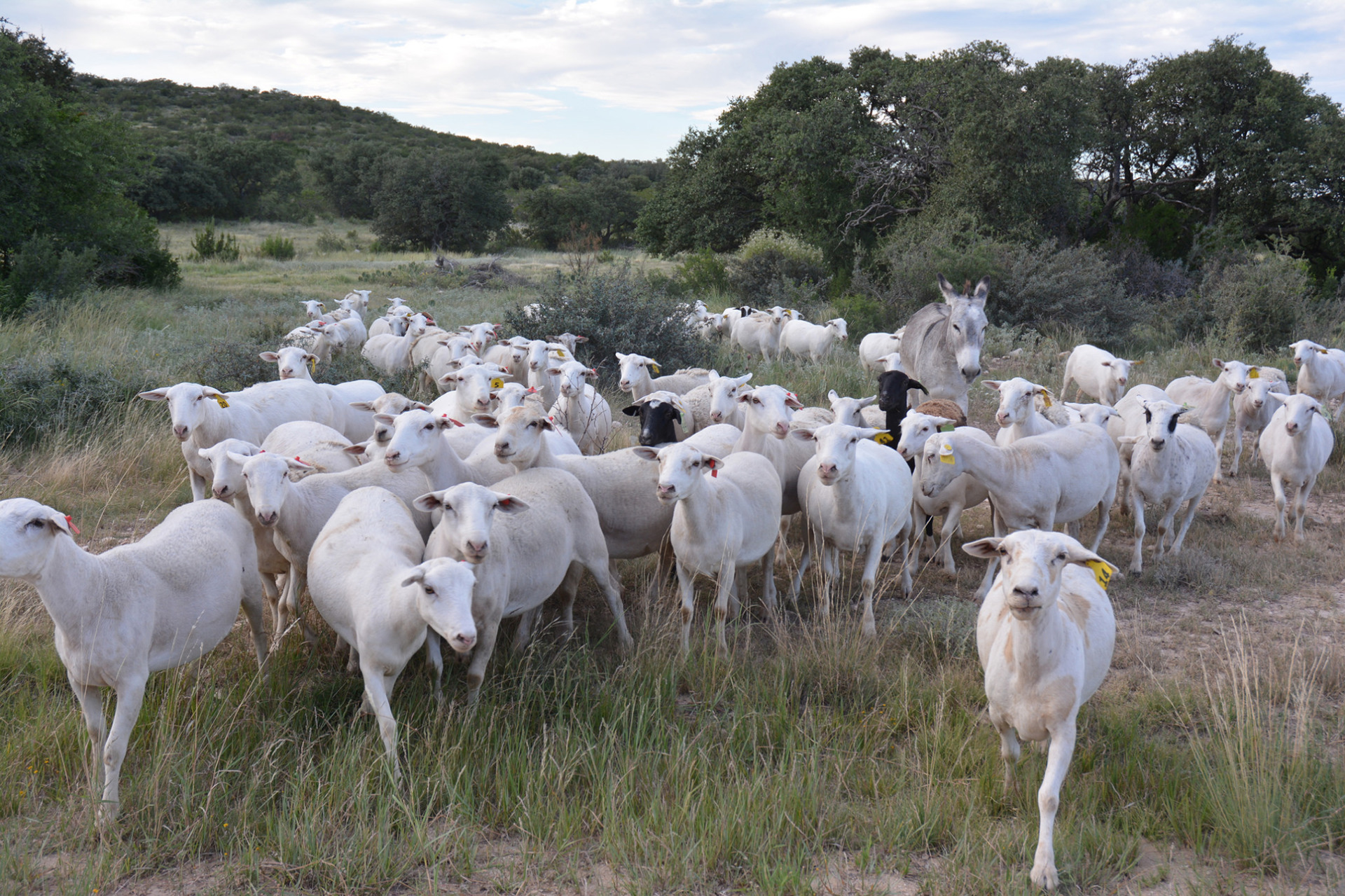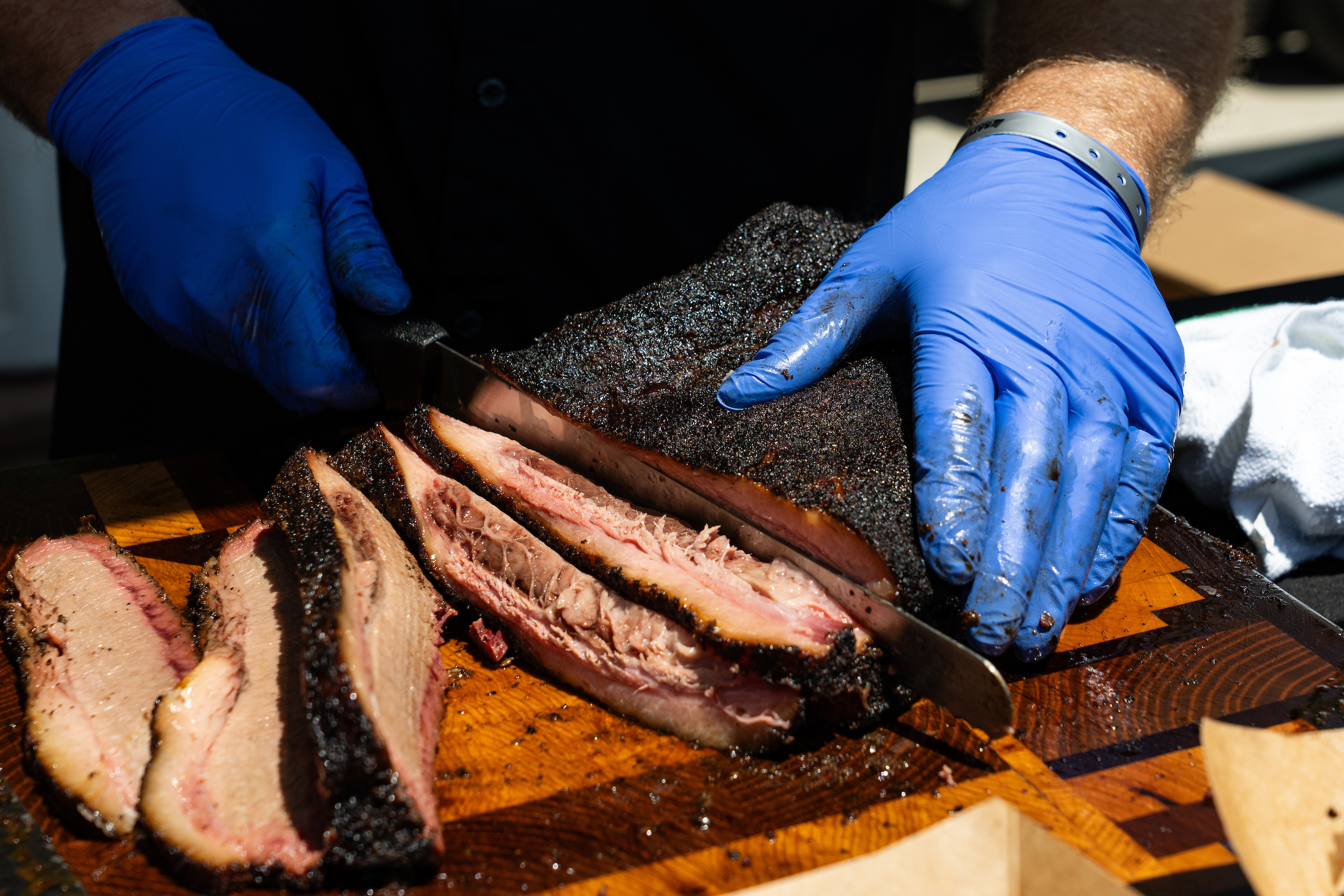Smoked meat was nowhere to be found in the middle of Aggie Park. Surrounded by barbecue booths as part of the Troubadour Festival, the central tent had something different in mind. This tent had no grills or smokers, just raw cuts of meat – and generations of meat science expertise.
Instead, meat scientists and their students in the Texas A&M College of Agriculture and Life Sciences’ Department of Animal Science brought cuts of brisket, beef and pork ribs, and pork butt on ice with banners outlining the retail cuts.
Once festival goers enjoyed their fill of a variety of barbecue samples, some stopped in to ask questions about the meat on display.
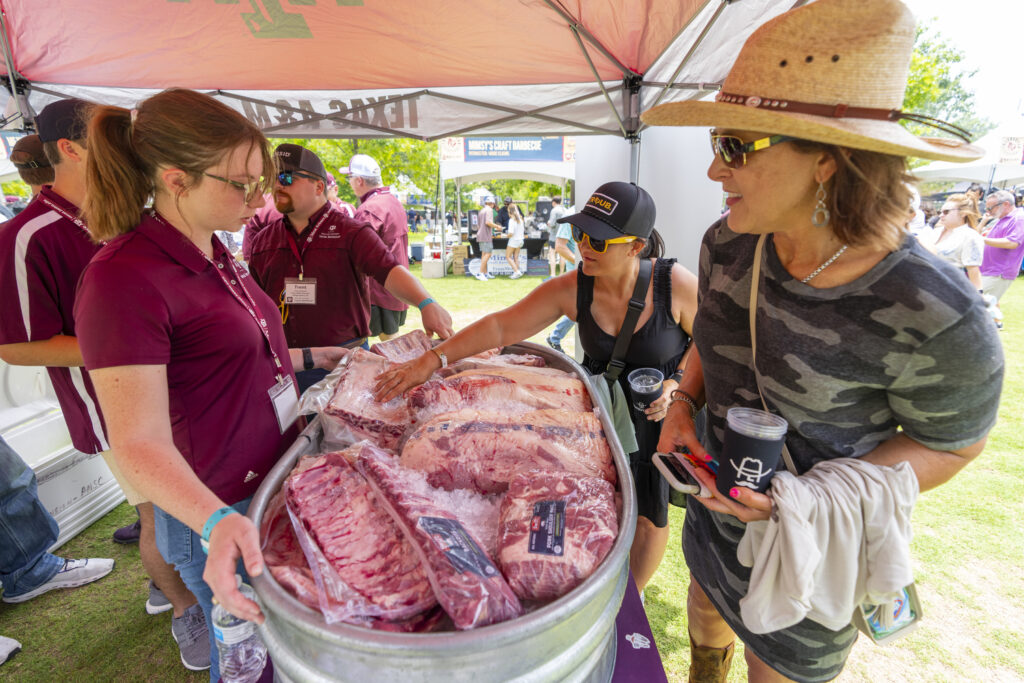
Teaching the science
Jeffrey W. Savell, Ph.D., vice chancellor and dean for Agriculture and Life Sciences, knew the setup offered something unique to visitors.
“We don’t want to be the barbecue cookers,” he said. “We want to be the people who understand the educational side, the technical side and the scientific side of barbecue.”
Savell is one of Texas A&M’s three brisketeers alongside Ray Riley, Rosenthal Meat Science and Technology Center manager, and Davey Griffin, Ph.D., professor and Texas A&M AgriLife Extension Service meat science specialist, both in the Department of Animal Science. The term “brisketeer” is an unofficial nickname given to the three experts who have spent their careers dedicated to meat science, and the intersection of teaching, research and extension.
Savell sees value in taking part in festivals like this.
“Texas A&M plays a crucial role at these events in educating the public about meat science and food safety, while simultaneously facilitating student growth. It’s a great opportunity for them to demonstrate their knowledge by talking to the public,” Savell said.
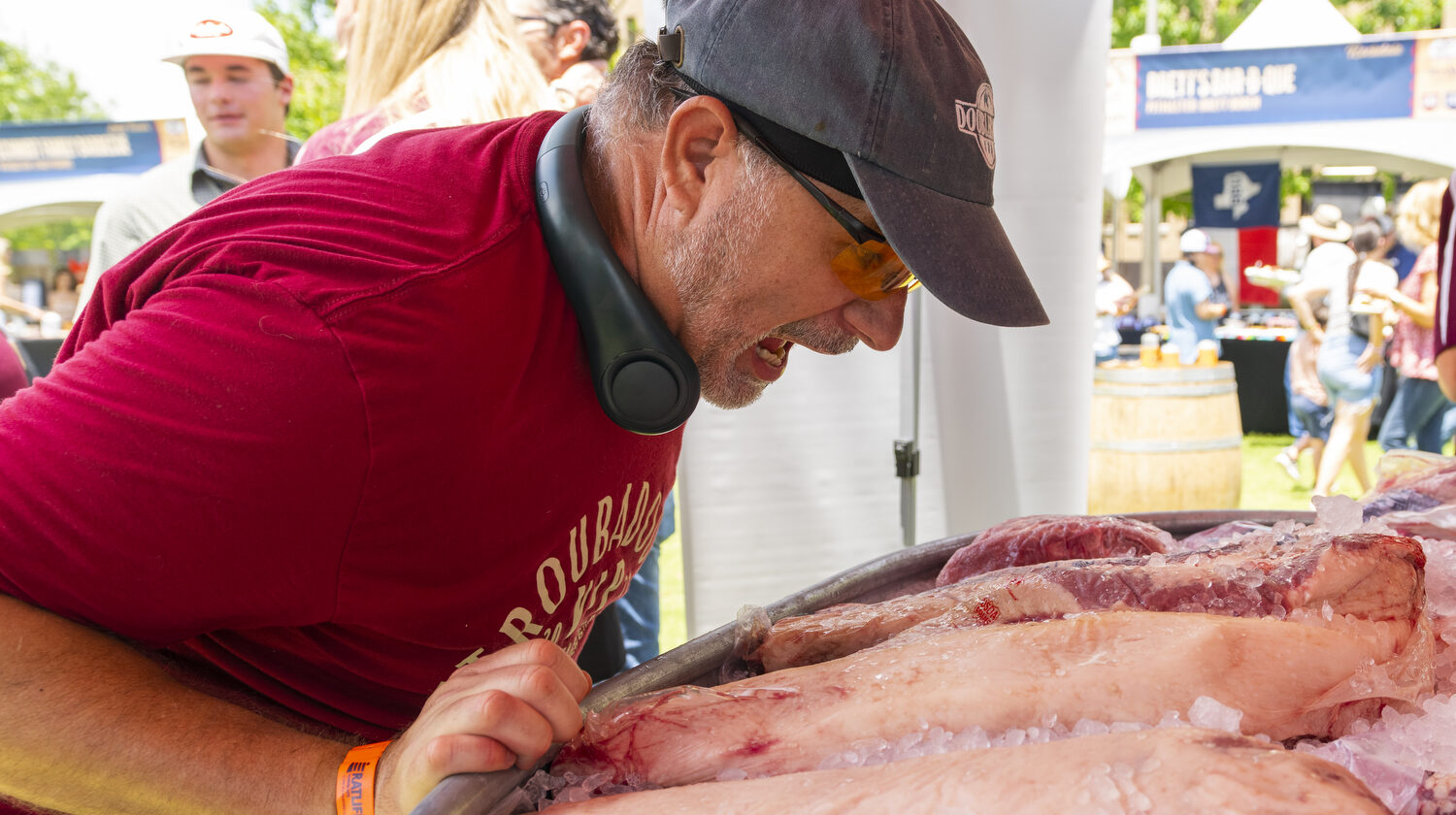
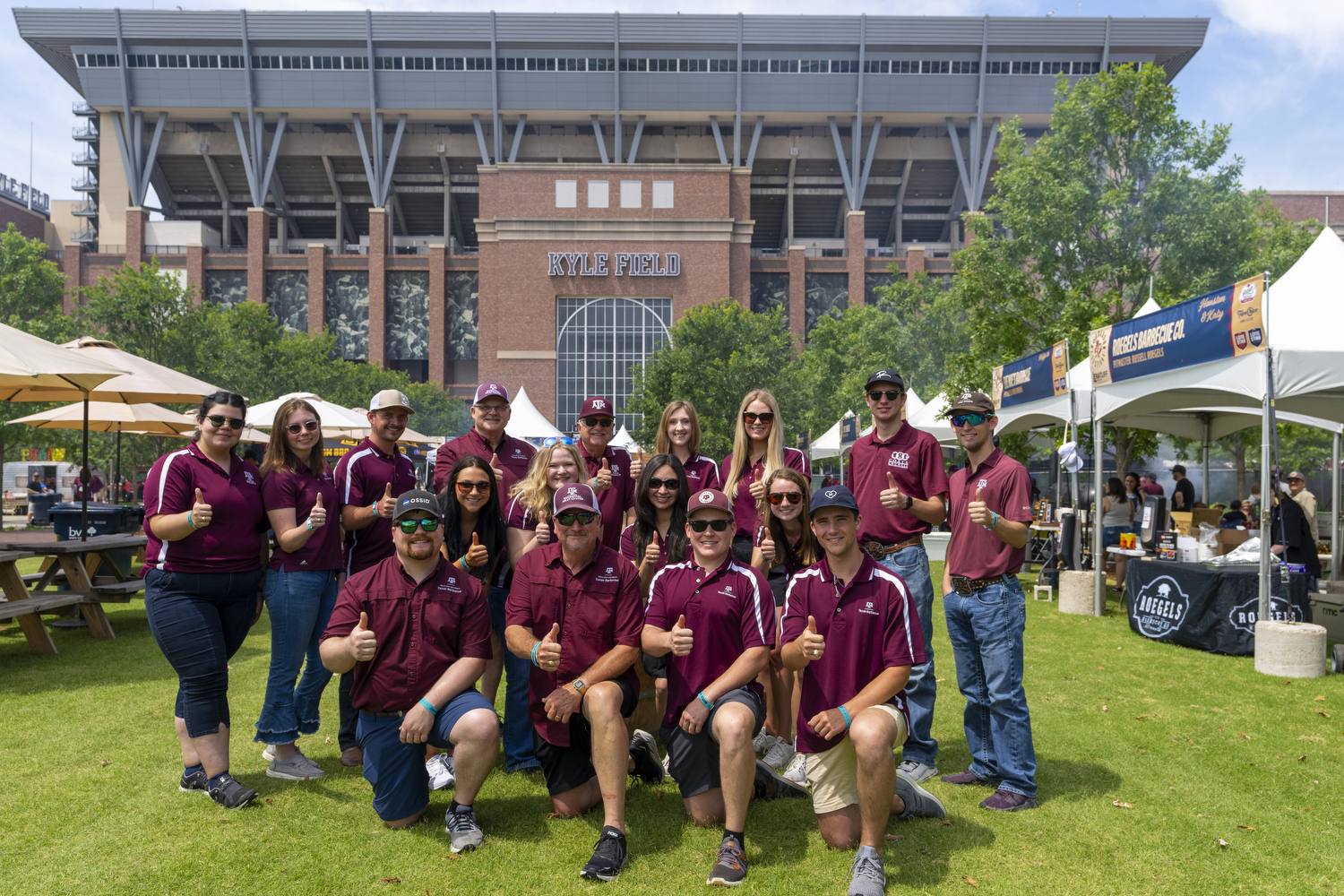

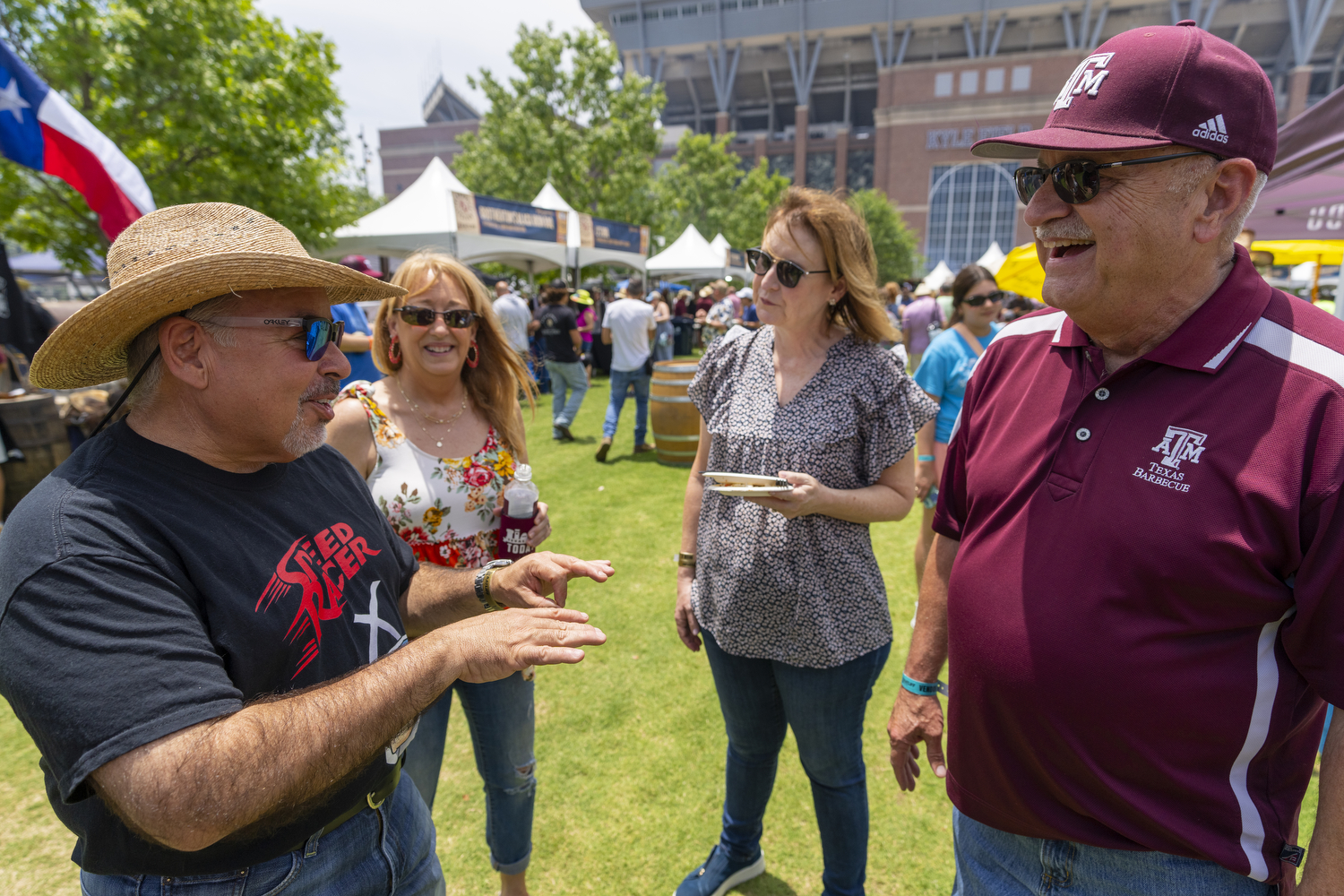
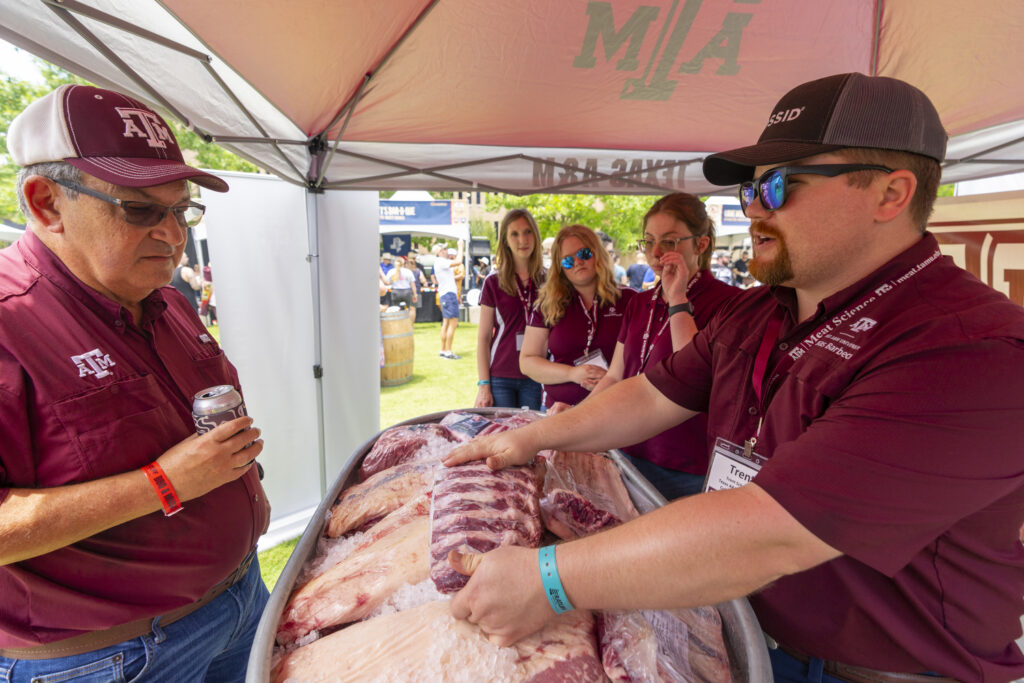
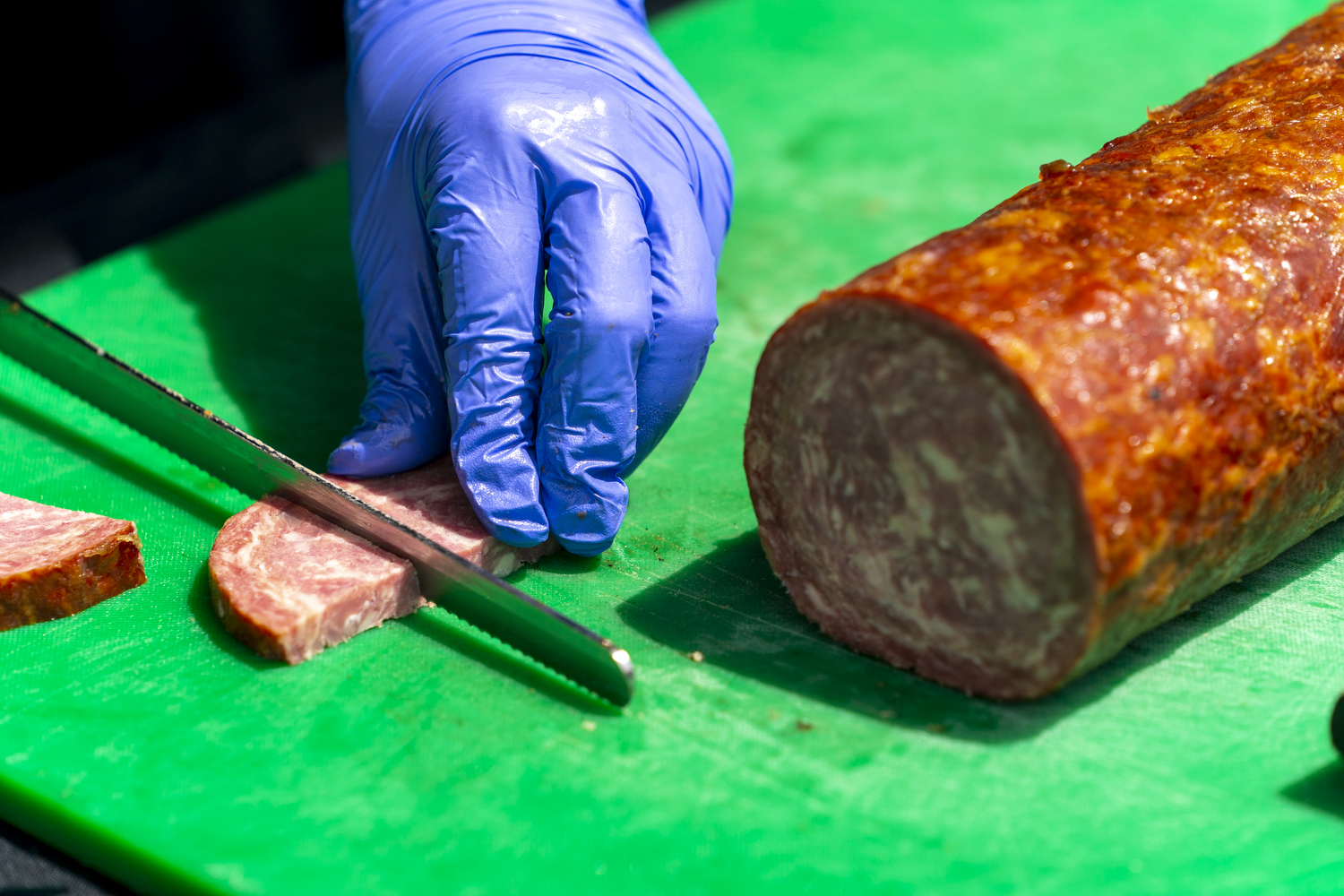
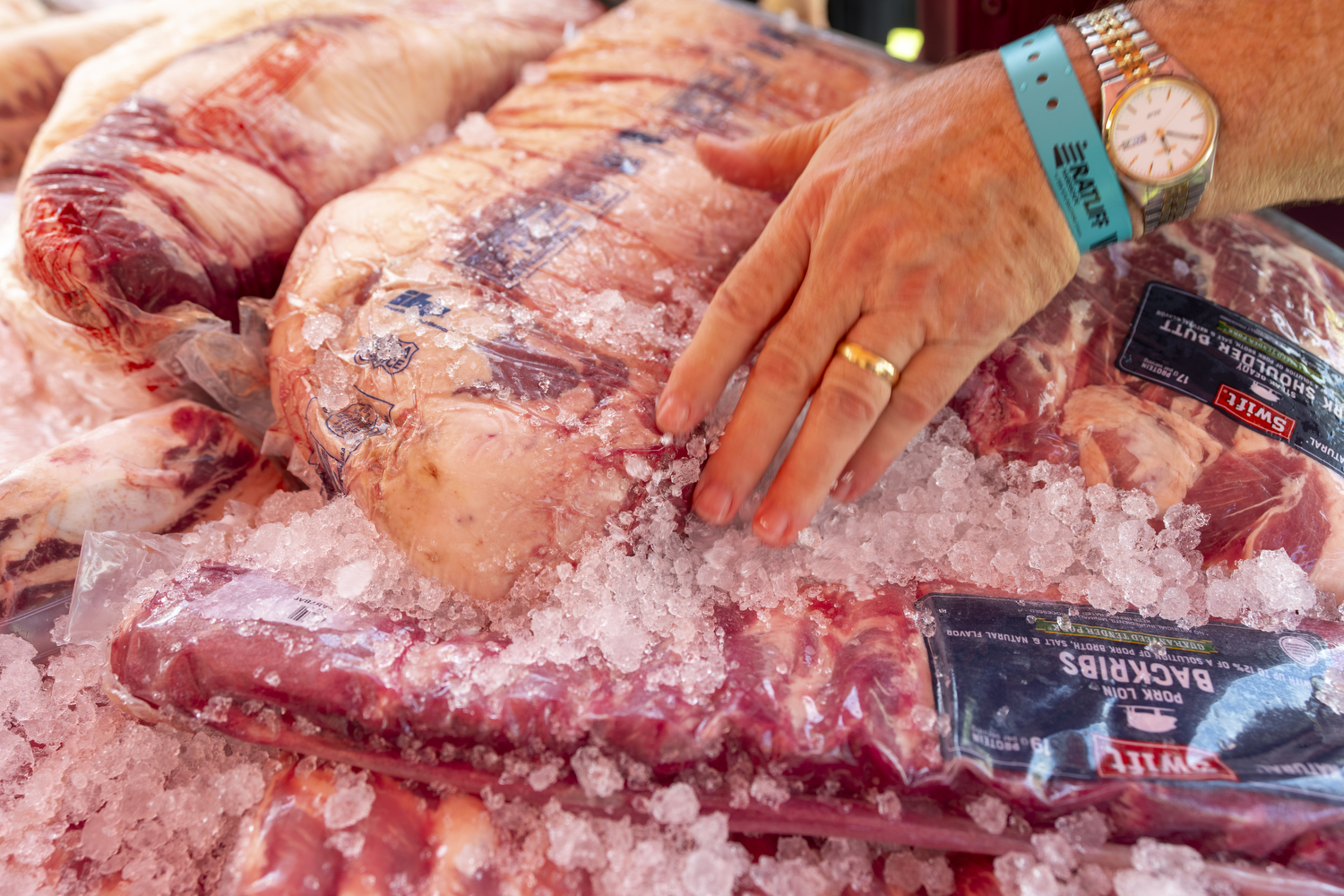
Moving toward the future
Kaylee Greiner completed her master’s degree in meat science and food safety in May. She also coached the Texas A&M national championship meat judging team last year.
Greiner jumps at the chance to share her knowledge.
“Getting to teach other people, watching them get inspired and have that passion for meat science has really made me passionate about what I’m doing, and has further made me think that I’m doing something that’s worthwhile,” she said.
Greiner was one of 12 current or former students on hand to answer questions about the cuts of meat before them.
“We don’t want to be the barbecue cookers. We want to be the people who understand the educational side, the technical side and the scientific side of barbecue.”
Jeffrey W. Savell, Ph.D.
Vice Chancellor and Dean for Agriculture and Life Sciences
Better science makes better barbecue
Griffin wants to show the home cook easy ways to make leaps and bounds in the quality of their products.
“Let’s educate people about the food products they’re using and help them better understand what that does for making better barbecue,” he said.
Griffin values the university’s role as an unbiased source of information, and he takes that responsibility seriously, especially when it comes to food safety.
“You need to know what your temperatures are, and you need to know they’re safe,” he said. “People will go out and spend thousands of dollars on a pit, but not have a good thermometer.”
And that’s only one of the pieces of information he passes along.
Griffin said simply giving meat enough time to rest before cutting can make the product 10 times better.
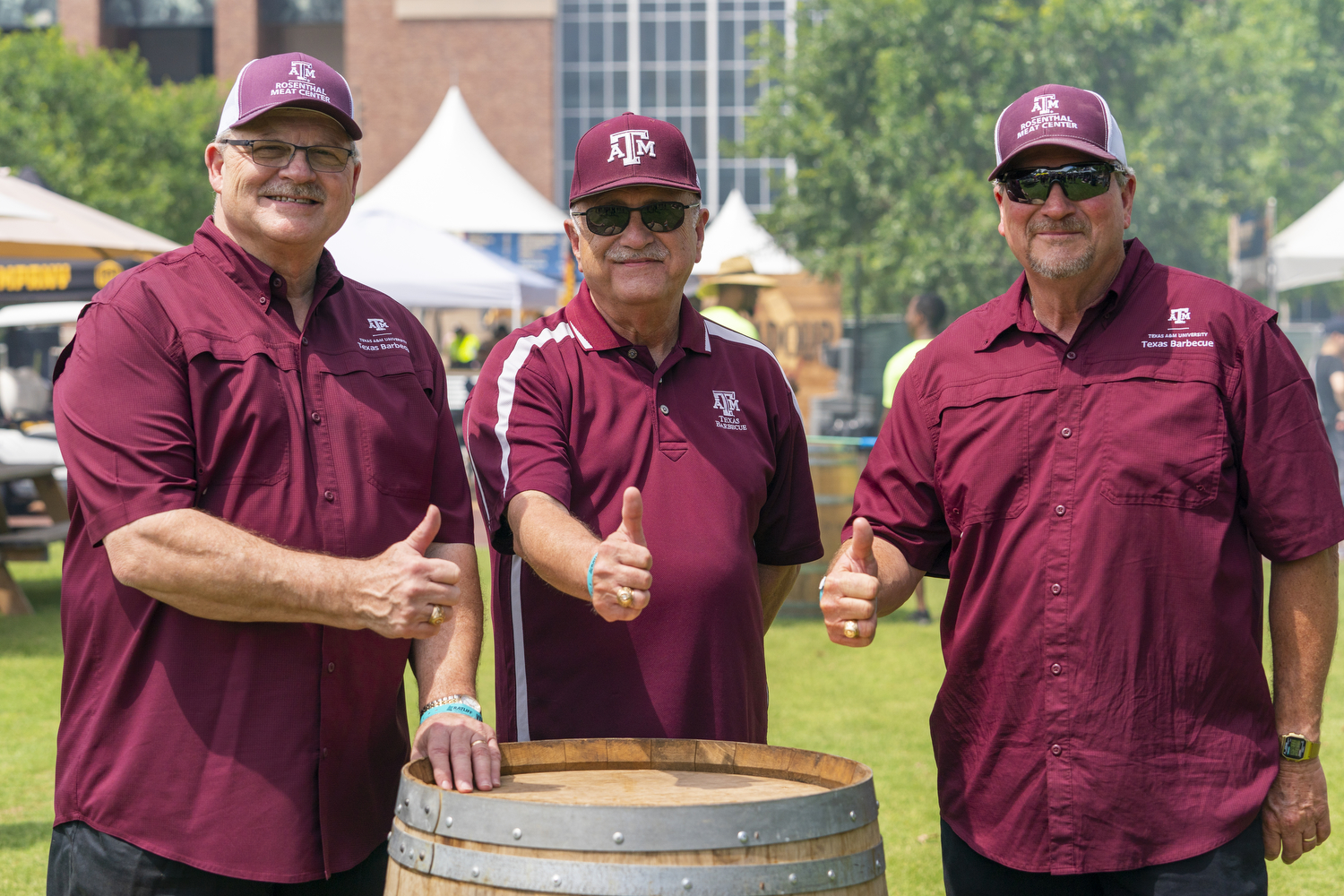
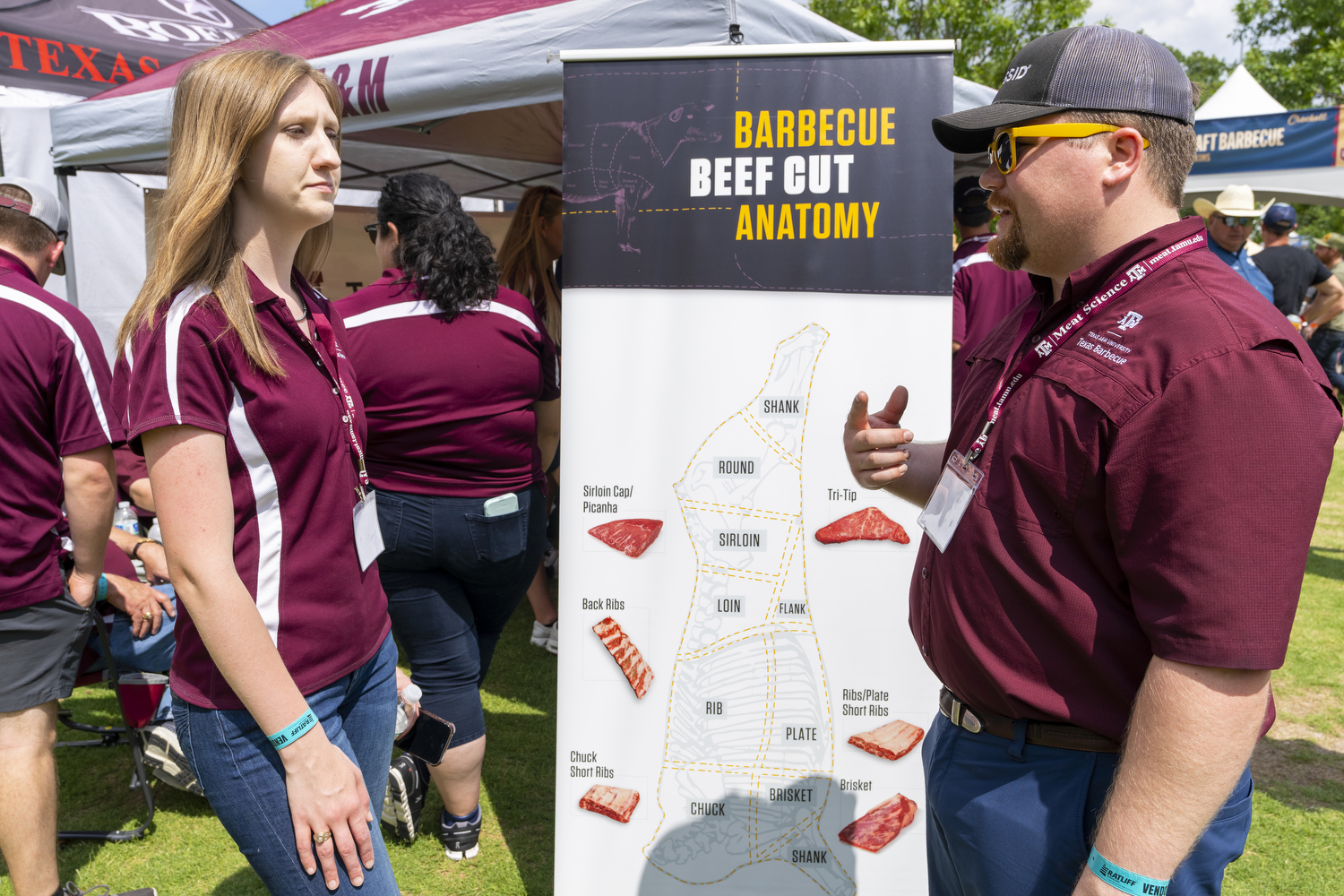

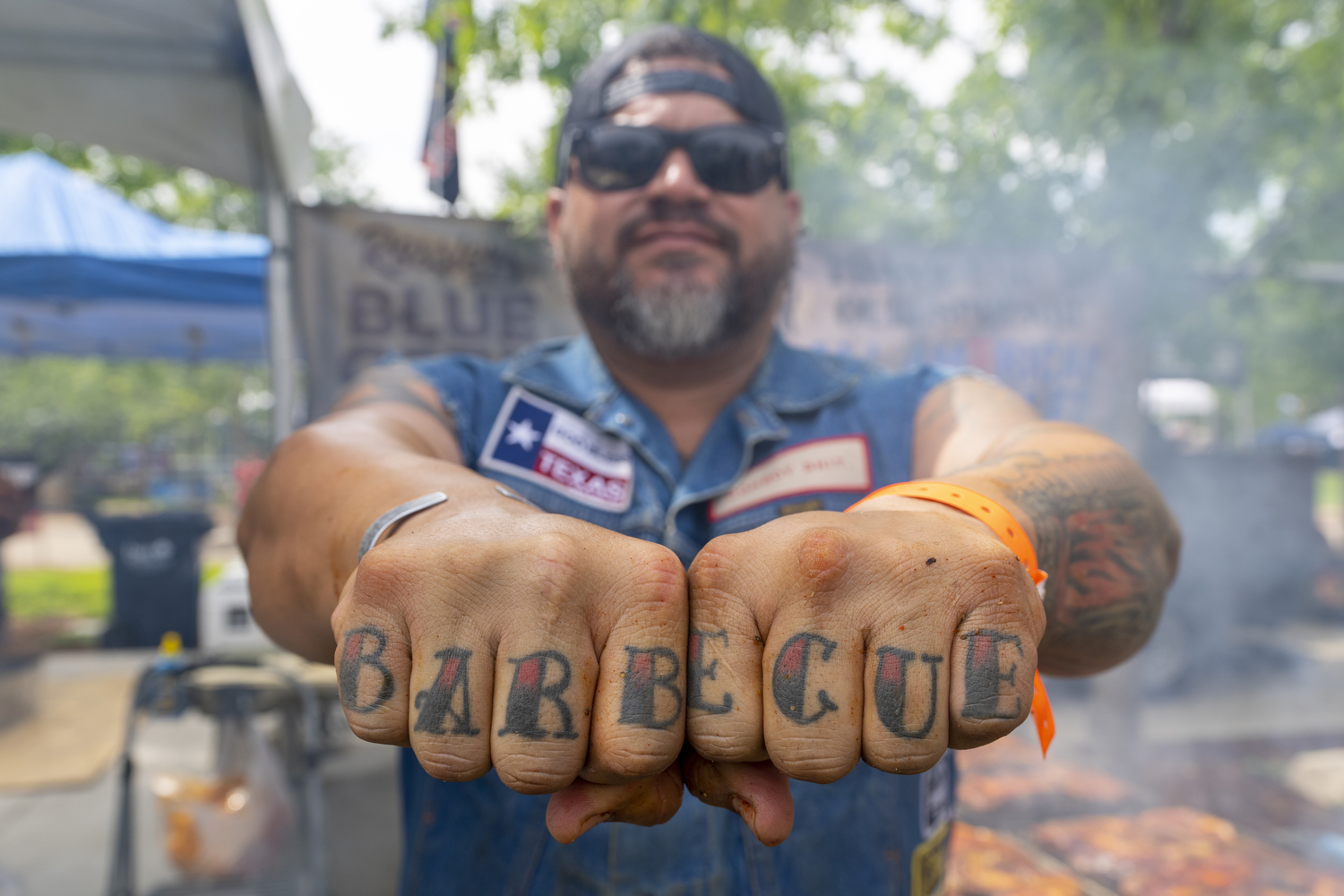
It’s the pits
Smoke from barbecue pits filled the air with a gray haze while Texas A&M students pointed out the differences between a trimmed and untrimmed brisket to inquiring minds.
“A lot of people don’t understand that this is all science,” Griffin said. “They think, ‘we’re just going to get a piece of meat, put it on a fire, drink a little beer and have a good time.’”
“There’s a little more to it than that,” Griffin said with a smile. “There’s science behind everything.”

